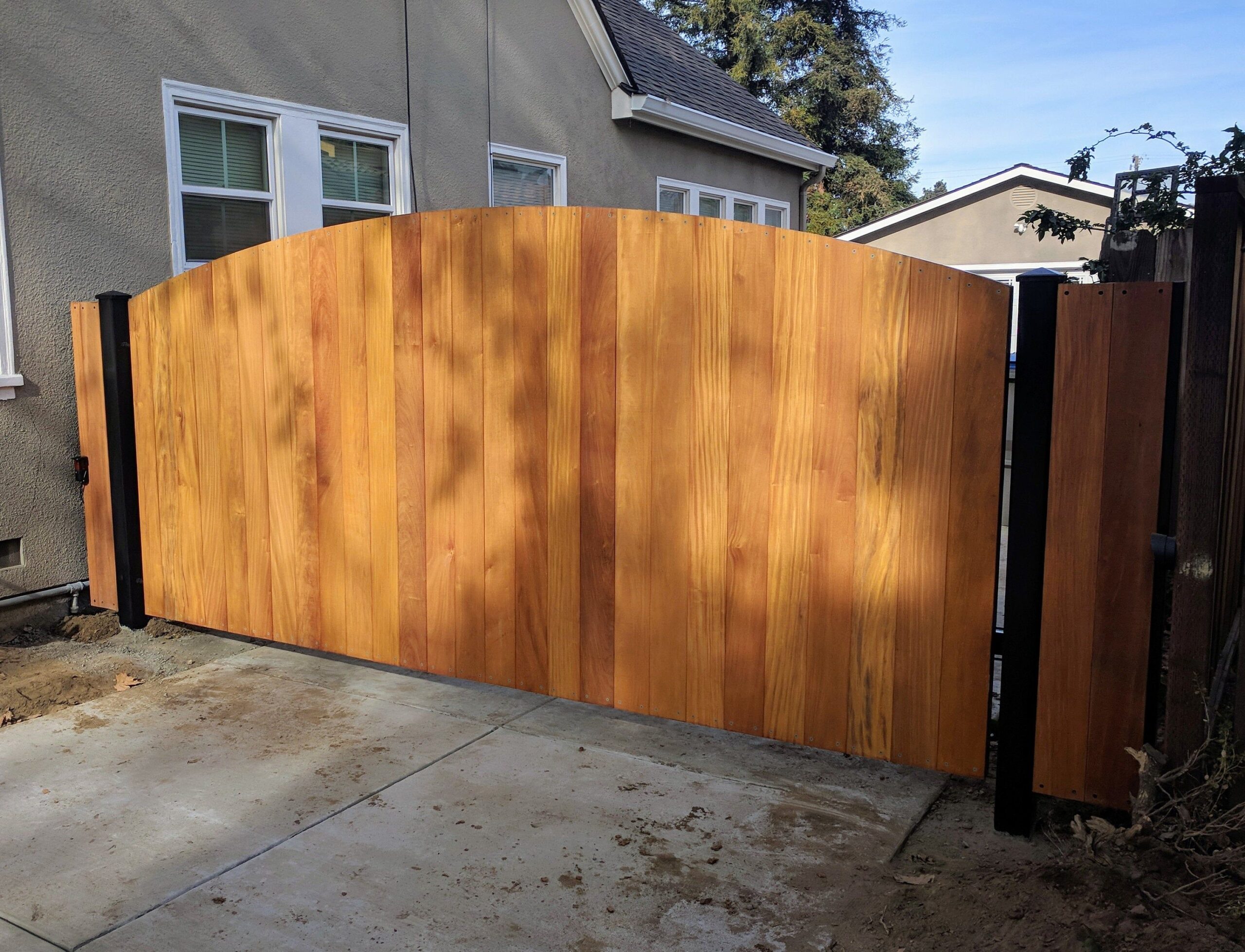Wooden driveway gates offer timeless beauty, security, and privacy for your home. As more people become environmentally conscious, choosing eco-friendly options for home improvements is increasingly important. When it comes to wooden gates, there are several sustainable choices that can reduce your environmental impact while still providing durability and aesthetic appeal. From responsibly sourced materials to eco-friendly finishes, here’s how you can make your wooden driveway gates both beautiful and environmentally friendly.
1. Choose Sustainable Wood Species
The first step in selecting an eco-friendly wooden gate is choosing the right type of wood. Some wood species are more sustainable than others, either because they are renewable, have a lower environmental impact, or are harvested responsibly.
- FSC-Certified Wood: The Forest Stewardship Council (FSC) certifies wood products that come from responsibly managed forests. This certification ensures that the wood is sourced in a way that preserves the health of the forest ecosystem, protects biodiversity, and supports the rights of local communities. FSC-certified wood is one of the most sustainable options for your gate.
- Reclaimed Wood: Using reclaimed or salvaged wood reduces the need for newly harvested trees and gives new life to materials that would otherwise go to waste. You can often find reclaimed wood from old barns, buildings, or other structures that have been dismantled, offering a unique, rustic look for your gate while minimizing your carbon footprint.
- Bamboo: While not as common for driveway gates, bamboo is a rapidly renewable resource that can be used for various outdoor applications. Bamboo grows quickly and requires little water or pesticides, making it a highly sustainable option. If available in your area, bamboo could be an eco-friendly alternative for your gate.
- Key Tip: Always look for wood that has been certified by a recognized organization like FSC, or consider opting for reclaimed or local wood to reduce your environmental impact.
2. Opt for Non-Toxic Finishes and Paints
Traditional paints and finishes often contain harmful chemicals such as volatile organic compounds (VOCs), which can be released into the air, harming both the environment and your health. Choosing eco-friendly finishes for your wooden driveway gate can help reduce your exposure to these toxins while protecting the wood.
- Low-VOC or No-VOC Paints: Look for paints and stains that are labeled as low-VOC or no-VOC. These finishes contain fewer chemicals, reducing air pollution and promoting a healthier home environment. Low-VOC paints are available in a wide range of colors and can provide the same level of protection as traditional paints.
- Natural Oils and Waxes: Using natural oils and waxes like linseed oil, tung oil, or beeswax can protect the wood while allowing it to breathe and retain its natural beauty. These natural finishes provide a protective coating without introducing harmful chemicals into the environment.
- Water-Based Finishes: Water-based paints and sealants are a more eco-friendly choice than solvent-based products. They tend to have fewer pollutants and are safer for both the environment and your family. Water-based finishes dry faster and are less likely to cause harmful fumes.
- Key Tip: Choose finishes with minimal environmental impact, such as low-VOC paints, natural oils, or water-based products, to ensure the longevity of your gate without compromising your eco-standards.
3. Prioritize Durability to Minimize Waste
One of the most important ways to reduce the environmental impact of your wooden driveway gate is by ensuring that it lasts for many years. Choosing high-quality, durable materials and maintaining them properly helps reduce the need for replacement and minimizes waste.
- Solid Construction: Invest in a well-built wooden gate with durable joinery and a sturdy frame. A well-constructed gate will withstand weather, wear, and use for longer, ultimately reducing the frequency of repairs or replacements.
- Reinforced for Longevity: Consider reinforcing your gate with diagonal braces or other reinforcements that provide extra strength. This will help prevent sagging, warping, and other forms of damage, ensuring the gate remains functional and secure for many years.
- Key Tip: By choosing durable construction methods and reinforcing the gate, you can extend its lifespan and reduce the need for early replacement.
4. Maintain Your Wooden Gate for Longevity
Maintaining your wooden driveway gate is essential for its longevity and sustainability. Proper care ensures the gate remains in good condition, reducing the need for replacements and minimizing environmental waste.
- Regular Cleaning: Gently clean the gate with mild detergent and water to remove dirt and debris. Avoid harsh chemicals that could damage the wood or finish. Regular cleaning prevents the buildup of grime that can lead to rot or mildew.
- Reapply Eco-Friendly Finishes: As your wooden gate ages, regularly reapply eco-friendly finishes, such as low-VOC stains or natural oils, to protect the wood from the elements. This helps extend the life of the gate and keeps it looking beautiful.
- Inspect for Damage: Routinely inspect your gate for signs of wear and tear, such as cracks, splinters, or loose hardware. Timely repairs can prevent small issues from turning into bigger problems that may require replacement.
- Key Tip: Regular maintenance ensures the longevity of your wooden gate, saving you money and resources in the long run.

5. Consider Local and Regional Wood Suppliers
When selecting wood for your driveway gate, consider choosing wood that is sourced locally or regionally. Local wood products reduce transportation-related carbon emissions, as the wood does not need to travel long distances to reach you.
- Benefits of Local Wood: By purchasing locally sourced wood, you support local economies and reduce the carbon footprint associated with transportation. Local suppliers may also use more sustainable harvesting practices, as they are often more familiar with the local ecosystem and regulations.
- Key Tip: Look for local wood suppliers or carpenters who prioritize sustainability and environmental stewardship in their practices.
6. Install a Gate with a Timeless Design
The design of your wooden driveway gate plays a role in its sustainability as well. Opting for a classic, timeless design can ensure that the gate remains functional and visually appealing for many years, reducing the likelihood of needing to replace it.
- Classic Designs: Choose a gate design that complements the style of your home and landscape and won’t go out of fashion. A timeless design ensures the gate remains a valuable asset to your property for decades.
- Modular and Repairable Designs: Look for gates with modular parts that can be replaced or repaired individually. This way, if a section of the gate becomes damaged, you can replace only that part instead of the entire gate, reducing waste.
- Key Tip: Select a simple yet elegant design that stands the test of time, reducing the need for future replacements and ensuring that your gate will remain relevant for years to come.
7. Recycling and Disposal
When it comes time to replace or dispose of your wooden driveway gate, consider eco-friendly disposal methods.
- Recycling: If the wood is still in good condition, consider donating or recycling it. Reclaimed wood can be reused for various DIY projects or repurposed by others.
- Composting: If the gate has reached the end of its life and cannot be reused, consider composting it (if untreated wood). Ensure that no toxic chemicals or finishes are present before composting.
- Key Tip: Aim to recycle or repurpose the wood whenever possible to reduce its impact on landfills.
Conclusion
Choosing eco-friendly wooden driveway gates is a great way to enhance the beauty of your property while reducing your environmental impact. By selecting sustainably sourced wood, using non-toxic finishes, maintaining the gate for longevity, and opting for durable designs, you can enjoy a beautiful, functional gate that contributes to a healthier planet. Sustainable choices in home improvements like these show that style and environmental responsibility can go hand-in-hand, ensuring your home remains both attractive and eco-conscious for years to come.



